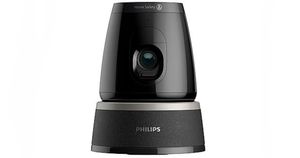
The Xiaomi Redmi Note 6 Pro has already been announced in some regions across the world. This is the successor to the Redmi Note 5 Pro smartphone from Xiaomi. It aims to replace one of the best selling Xiaomi phones in the country. The Redmi Note 6 Pro is a mid-range smartphone, with slightly updated design, better cameras, and a larger screen. That’s all the difference you’ll find in the new phone, but the camera update is enough to warrant an upgrade.
In this post, we are going to talk about the new features and the Dual Pixel tech used in the Redmi Note 6 Pro rear camera. This tech can improve photography in low-light, as well as in daylight. This is one of the major improvements with the phone.
Xiaomi Redmi Note 6 Pro Rear Camera
Xiaomi hasn’t really upgraded a lot with the Redmi Note 6 Pro. When you first look at the new device, you will only see a dual-front facing camera setup, and a larger display with notch and slim bezels. The internals are pretty much the same, with the same Snapdragon 636 processor as before, and up to 6GB of RAM with 64GB storage.
It does come with a dual-rear camera setup, which is similar to the one found in the Redmi Note 5 Pro. You get a primary 12MP camera, and a secondary 5MP depth sensor. However, that’s where the similarities end. The 12MP camera on the Redmi Note 6 Pro is bigger in size, 1.4µm to be exact. The camera also comes with Dual Pixel PDAF technology, with a f/1.9 aperture. In the older phone, the main 12MP camera only had PDAF and f/2.2 aperture, with a 1.25µm sensor.
What Is Dual Pixel PDAF?
The Dual Pixel phase detection auto-focus tech allows the phone to focus better in low-light, which provides sharper photos. Each pixel has two photodiodes, which collect light inputs from different angles. These photodiodes work in unison and create a single output pixel. In layman terms, the pixels can now capture more light with better focus speed and accuracy. This helps when you are shooting moving objets as well, and gives a less shaky photo. The 12MP sensor with f/1.9 aperture present on the phone will further help in capturing more light. You can use the manual mode to really see the difference between the older and newer cameras.
Flagship smartphones from various manufacturers have been using this technology for a couple of years now, but not many mid-range phones have it. Therefore, it is nice to see it on the Redmi Note 6 Pro. You can expect the phone to take much better photos than the previous generation device. The low-light photography should also see improvements.
The Redmi Note 6 Pro from Xiaomi will be announced soon in India, but we don’t have an exact date yet. It is expected to be priced around Rs. 16,000.

















